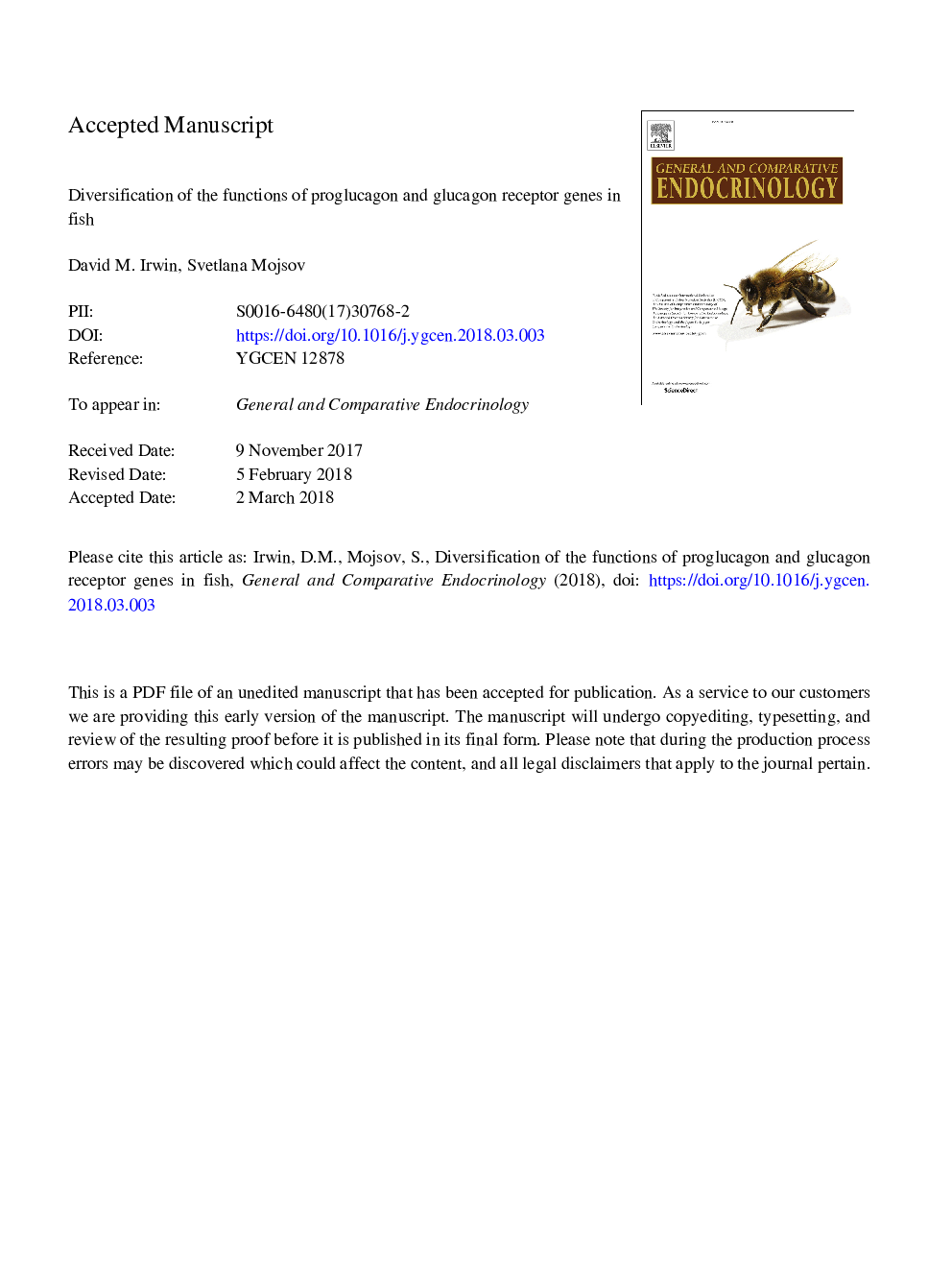| Article ID | Journal | Published Year | Pages | File Type |
|---|---|---|---|---|
| 8630989 | General and Comparative Endocrinology | 2018 | 67 Pages |
Abstract
The teleost fish-specific genome duplication gave rise to a great number of species inhabiting diverse environments with different access to nutrients and life histories. This event produced duplicated gcg genes, gcga and gcgb, for proglucagon-derived peptides, glucagon and GLP-1 and duplicated gcgr receptor genes, gcgra and gcgrb, which play key roles connecting the consumption of nutrients with glucose metabolism. We conducted a systematic survey of the genomes from 28 species of fish (24 bony (Superclass Osteichthyes), 1 lobe-finned (Class Sarcoperygii), 1 cartilaginous (Superclass Chondrichthyes), and 2 jawless (Superclass Agnatha)) and find that almost all surveyed ray-finned fish contain gcga and gcgb genes with different coding potential and duplicated gcgr genes, gcgra and gcgrb that form two separate clades in the phylogenetic tree consistent with the accepted species phylogeny. All gcgb genes encoded only glucagon and GLP-1 and gcga genes encoded glucagon, GLP-1, and GLP-2, indicating that gcga was subfunctionalized to produce GLP-2. We find a single glp2r, but no glp1r suggesting that duplicated gcgrb was neofunctionalized to bind GLP-1, as demonstrated for the zebrafish gcgrb (Oren et al., 2016). In functional experiments with zebrafish gcgrb and GLP-1 from diverse fish we find that anglerfish GLP-1a, encoded by gcga, is less biologically active than the gcgb anglerfish GLP-1b paralog. But some other fish (zebrafish, salmon, and catfish) gcga GLP-1a display similar biological activities, indicating that the regulation of glucose metabolism by GLP-1 in ray-finned fish is species-specific. Searches of genomes in cartilaginous fish identified a proglucagon gene that encodes a novel GLP-3 peptide in addition to glucagon, GLP-1, and GLP-2, as well as a single gcgr, glp2r, and a new glucagon receptor-like receptor whose identity still needs to be confirmed. The sequence of the shark GLP-1 contained an N-terminal mammalian-like extension that in mammals undergoes a proteolytic cleavage to release biologically active GLP-1. Our results indicate that early in vertebrate evolution diverse regulatory mechanisms emerged for the control of glucose metabolism by proglucagon-derived peptides and their receptors and that in ray-finned fish they included subfunctionalization and neofunctionalization of these genes.
Related Topics
Life Sciences
Biochemistry, Genetics and Molecular Biology
Endocrinology
Authors
David M. Irwin, Svetlana Mojsov,
